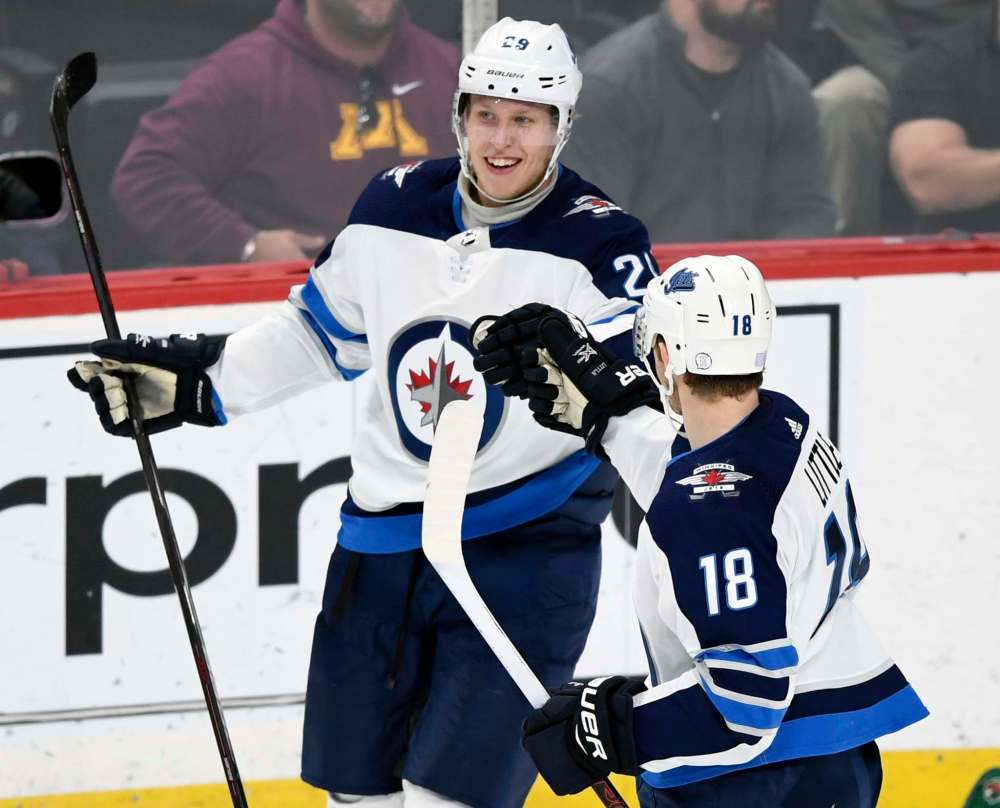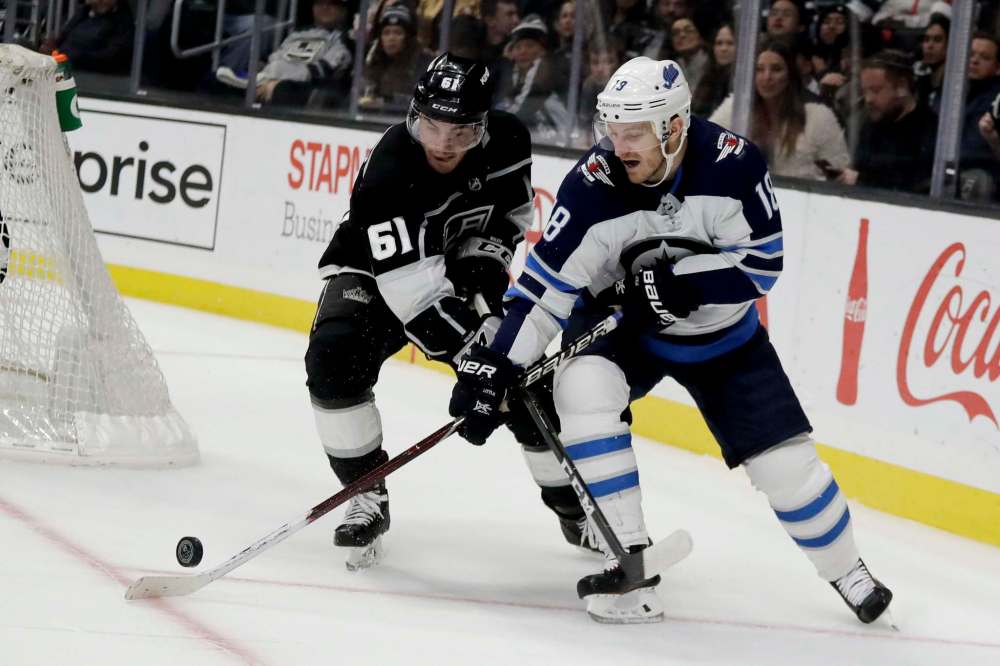Laine-Little a second-line marriage not made in heaven
Advertisement
Read this article for free:
or
Already have an account? Log in here »
To continue reading, please subscribe:
Monthly Digital Subscription
$0 for the first 4 weeks*
- Enjoy unlimited reading on winnipegfreepress.com
- Read the E-Edition, our digital replica newspaper
- Access News Break, our award-winning app
- Play interactive puzzles
*No charge for 4 weeks then price increases to the regular rate of $19.95 plus GST every four weeks. Offer available to new and qualified returning subscribers only. Cancel any time.
Monthly Digital Subscription
$4.99/week*
- Enjoy unlimited reading on winnipegfreepress.com
- Read the E-Edition, our digital replica newspaper
- Access News Break, our award-winning app
- Play interactive puzzles
*Billed as $19.95 plus GST every four weeks. Cancel any time.
To continue reading, please subscribe:
Add Free Press access to your Brandon Sun subscription for only an additional
$1 for the first 4 weeks*
*Your next subscription payment will increase by $1.00 and you will be charged $16.99 plus GST for four weeks. After four weeks, your payment will increase to $23.99 plus GST every four weeks.
Read unlimited articles for free today:
or
Already have an account? Log in here »
Hey there, time traveller!
This article was published 25/01/2019 (2538 days ago), so information in it may no longer be current.
Last week I wrote about Patrik Laine’s defensive play, an area of his game that gets a lot of criticism, some of which is justified and some of which isn’t.
The big issue I found with Laine’s defence is his puck-management in all three zones, creating a ton of turnovers, especially in the defensive zone, which put extra pressure on his teammates, who have to scramble to defend plays when the structure isn’t set up.
That makes things messier, and any analysis of his linemates’ play has to have that context, but one thing I’m not ready to blame Laine for is the puck movement that the Jets allow while he’s on the ice.

One thing I pointed out though, was that it’s more often the centre’s job to cover the middle of the ice and cut down those passes to the slot, so that led me to wonder if Bryan Little is doing the job of a second-line centre effectively enough to insulate a player with the defensive weaknesses that Laine has.
Looking at differentials, we can see that Little’s presence on the ice this season for the Jets hasn’t been as negative as Laine’s has, which likely points to Little not being the direct problem on the second line, but it is worth noting that both players seem to be better without the other, as Laine’s shot-attempt differential jumps up to 49.08 per cent without Little, and Little’s jumps to 56.83 per cent without Laine, so it’s possible that this combination just doesn’t work at even-strength.
!function(e,t,s,i){var n=”InfogramEmbeds”,o=e.getElementsByTagName(“script”)[0],d=/^http:/.test(e.location)?”http:”:”https:”;if(/^/{2}/.test(i)&&(i=d+i),window[n]&&window[n].initialized)window[n].process&&window[n].process();else if(!e.getElementById(s)){var r=e.createElement(“script”);r.async=1,r.id=s,r.src=i,o.parentNode.insertBefore(r,o)}}(document,0,”infogram-async”,”https://e.infogram.com/js/dist/embed-loader-min.js”);
The one area where Little seems to have as much trouble as Laine in the differentials is in passes to the slot, which is exactly where we wanted to focus, anyway.
Overall, Little blocks 1.7 opposition passes in the defensive zone per 20 minutes, slightly above the Jets’ team average of 1.62 for forwards, and of the passes that he has a chance to block, he succeeds in stopping 80 per cent, just a hair below the team average of 81.5 per cent.
That doesn’t strike me as a significant problem or weakness for Little, yet among Jets forwards no one is on the ice for more passes to the slot against per 20 minutes at five-on-five than his 4.82, which is an even worse mark than Laine’s 4.65, and when that line is not on the ice, the Jets allow only 3.5 per 20 minutes.
My next thought was that maybe the second line is playing a disproportionate amount of time with Jets’ defencemen who are poor at blocking passes, but none of the Jets’ regular defencemen are on the ice for as many passes to the slot against as the second line is, even Joe Morrow, who is known to be a defensive liability, is on the ice for just 4.23 passes to the slot against, so it’s not on the defence.
The only reasonable conclusion that I can come to with Little and Laine as a duo is that their line is poor enough at positioning in the defensive zone that they aren’t close enough to passing lanes to have a chance to get in the way of pucks going into the slot.
Little and Laine are the only Jets forwards who spend more than 30 per cent of their ice time in the defensive zone, which is anecdotal evidence that they get caught running around in their own zone more than their teammates, and a big reason for that is how both players handle zone exits.

Between carrying the puck out, passing it out or receiving passes in the neutral zone, Laine takes part in 10.3 controlled zone exits — skating the puck over the blue line instead of just chipping or lobbing it — per 20 minutes, while Little takes part in 8.3. The big gap between them is a result of Little rarely carrying the puck out, exiting the zone with the puck on his stick just 1.74 times per 20, while Laine carries it out 3.75 times per 20 minutes.
This issue with Laine’s zone exits is that his success rates are alarmingly low; of attempted exit-pass receptions he’s in the neutral zone for, he controls only 51.7 per cent, a team low and far below the team average of 63 per cent. Laine’s passes aren’t much better, which brings us back to his league-high turnover rate, with a team-low outlet-pass success rate of 54 per cent.
Unfortunately, Laine seems to really struggle to move the puck in the defensive and neutral zones while under pressure, and Little isn’t an active enough transition player to compensate for that weakness.
Among Jets’ forwards, only Mathieu Perreault takes part in fewer than Little’s 12.4 transition-driving plays per 20 minutes, which is interesting because he and Little were Laine’s two linemates at the beginning of the season, which forced him to take a bigger part of the transition play while his line was on the ice, and he has struggled.
None of this excuses Laine’s struggles; he absolutely needs to take ownership of his poor defensive play and find a way to improve, but I don’t think he and Little are a duo that should stick together long term, their skill sets work together fine offensively, but outside the O-zone, they make the Jets’ second line very exploitable.





